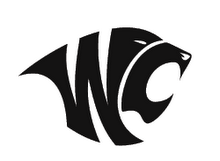In a bit of Deja Vu, the conscious feeling not the forgettable Denzel suspense film, Motorola (MOT) is attempting to pick its phone company off of the balance sheet floor with an attractive new handset. Investors have just seen this same story with PDA legend Palm (PALM), as it used hype from its Pre handset unveiled in January of this year to move the stock from $4 to $14 and save a business that was clearly heading in the wrong direction.
The battle in the smart phone marketplace is very heated, with entrenched competitors Apple (AAPL) and Research In Motion (RIMM) slowly gaining market share but gathering much of the mind share, and more importantly most of the profit margins. Recent stats show those two juggernauts grabbing just 3% of the overall cellphone market but an astounding 35% of all industry profits. And for good reason, the companies sell very expensive but heavily subsidized attractive smart phones.
Motorola, which has been in dire financial shape quarter after quarter for what can only be described as forever, hasn't had a hit in the cell phone space since its popular RAZR handset, and is desperately trying to compete in the profitable smart phone segment. By gutting through a lot of the company, and doing away with historically bad Motorola interfaces the company turned to Google's (GOOG) upstart Android platform for its resurgence.
Android, by all accounts is gaining significant traction since the first HTC handset launched nearly a near ago. The platform has been featured in 3 additional phones headed in the US thus far and rumors peg the number of Android handsets at 20 into 2010. This contrasts with the handful of RIM models available and the 2 current selling versions of Apple's iPhone. Motorola is betting with a lot of the industry that the free Android platform can eventually be as compelling and competitive in an industry feeling the need for consolidation in what is becoming an age of mobile applications. If your phone doesn't have applications available its simply not as good, and the beauty of Android, as far at Moto is concerned, is that it doesn't need to worry about pumping resources to create an application hub. The reach of Google is already doing just that, granted it is nowhere near the size of Apple's AppStore, but Android does boast the 2nd biggest mobile application catalogue. Nothing to scoff at.
Enter the Motorola Cliq, the world's first social phone, as the company claims. The phone is built on Android, but Moto's designers have layered an interface that directly ties in a user's Facebook, MySpace and Twitter contacts and status information. The social aspects of the phone are sure to resonate with a younger smart phone buying public and Motorola has shown it can indeed build something of higher quality. Will the phone be able to compete in the space? Sure, but will it gain any significant market share? At least one analyst seems to think so, as a note was published putting 4th quarter Cliq sales at about 750,000 or an estimated 5% of Moto cell sales. 5% may not seem that significant, but with a hefty subsidy, Motorola could start to see some real revenue from its new headlining handset. And after all, Moto essentially bet the company on Android less than a year ago, so we're guaranteed to see several handsets leveraging the new interface.
While specs are impressive, price will be a key differentiator for consumers. In the age of the $99 iPhone 3G and the higher capacity $199 iPhone 3GS, it is sheer lunacy for other players to think they can charge more and gain any sort of traction with consumers. Thus far though, Investors are jumping in and believing in the robot that will eventually have come to save Motorola from the brink. Shares are up 7% today and gained more than 10% since the device was officially announced. Here we go again?
Disclosure: Author owns AAPL, GOOG
11 September, 2009
Can Motorola follow the Palm path?
Posted by
Chris Krasowski
at
9/11/2009 02:26:00 PM
![]()
Labels: AAPL, Android, GOOG, iPhone 3G, iPhone 3GS, MOT, Motorola Cliq, PALM
Subscribe to:
Post Comments (Atom)





No comments:
Post a Comment